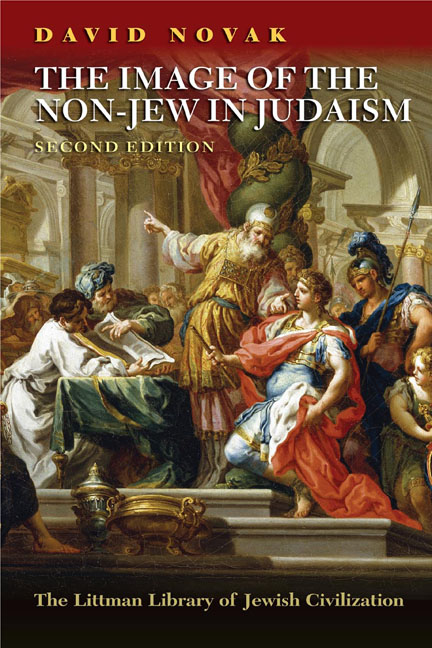Book contents
- Frontmatter
- Dedication
- Preface
- Acknowledgments
- Contents
- Chapter Summaries
- 1 The Origins of the Noahide Laws
- 2 The Law of Adjudication
- 3 The Law of Blasphemy
- 4 The Law of Idolatry
- 5 The Law of Homicide
- 6 The Law of Sexual Relations
- 7 The Law of Robbery
- 8 The Law of the Torn Limb
- 9 Aggadic Speculation
- 10 Maimonides’ Theory of Noahide Law
- 11 Albo's Theory of Noahide Law
- 12 Late Medieval Developments
- 13 Moses Mendelssohn and his School
- 14 Hermann Cohen and the Jewish Neo-Kantians
- 15 Conclusion
- Afterword
- List of Abbreviations
- Notes
- Bibliography
- Index
Chapter Summaries
- Frontmatter
- Dedication
- Preface
- Acknowledgments
- Contents
- Chapter Summaries
- 1 The Origins of the Noahide Laws
- 2 The Law of Adjudication
- 3 The Law of Blasphemy
- 4 The Law of Idolatry
- 5 The Law of Homicide
- 6 The Law of Sexual Relations
- 7 The Law of Robbery
- 8 The Law of the Torn Limb
- 9 Aggadic Speculation
- 10 Maimonides’ Theory of Noahide Law
- 11 Albo's Theory of Noahide Law
- 12 Late Medieval Developments
- 13 Moses Mendelssohn and his School
- 14 Hermann Cohen and the Jewish Neo-Kantians
- 15 Conclusion
- Afterword
- List of Abbreviations
- Notes
- Bibliography
- Index
Summary
CHAPTER 1. The Origins of the Noahide Laws
This chapter begins with reflections on some previously proposed historical timeframes for the formation of Noahide law. Earlier scholars located its origins variously: in the Bible, among Hittite legal scholars and during the Maccabean era. This chapter maintains, contrary to prior scholarship, that the concept of the Noahide is absent until the first century CE; that is, it is a rabbinic creation. While theology can discover the beginnings of the Noahide laws in the Torah, their historical starting point can only be established following the social, demographic and religious dislocations of the Second Temple's destruction in 70 CE. For the rabbis, these laws originated prior to the Sinaitic revelation; they were the moral standard for the entire gentile world, and that world of course included the ancestors of those who would later accept the covenant at Sinai. Israelites before Sinai, then, were Noahides.
The Noahide laws were also considered obligatory for all time, and would be the measure by which gentiles would be judged. In order to give the Noahide laws a biblical imprimatur, the rabbis linked the Noahide (ben noah) to the ger toshav, the non-Jew who lived in the land of Israel and accepted Israelite rule. However, these laws never constituted an active body of applied social and criminal regulation, and they are not descriptive of any actual historical period. By the time that the laws received their basic formulation in the Talmud, no gentiles were living under Jewish jurisdiction, and as a consequence the rabbinic imagining of these laws as a functioning legal system was of theoretical value alone. The theoretical nature of the Noahide laws, however, was not a disadvantage but rather a benefit; it made the laws philosophically attractive, a rich source for reflection on the essential structures of Judaism itself. Because these laws were considered by the rabbis to be rational—that is, knowable even in the absence of a divine revelation—and universal—that is, it is a part of human nature across time and place—they formed a moral connection between the people of the covenant, Israel, and the gentile world.
- Type
- Chapter
- Information
- The Image of the Non-Jew in JudaismThe Idea of Noahide Law, pp. 1 - 10Publisher: Liverpool University PressPrint publication year: 2011

